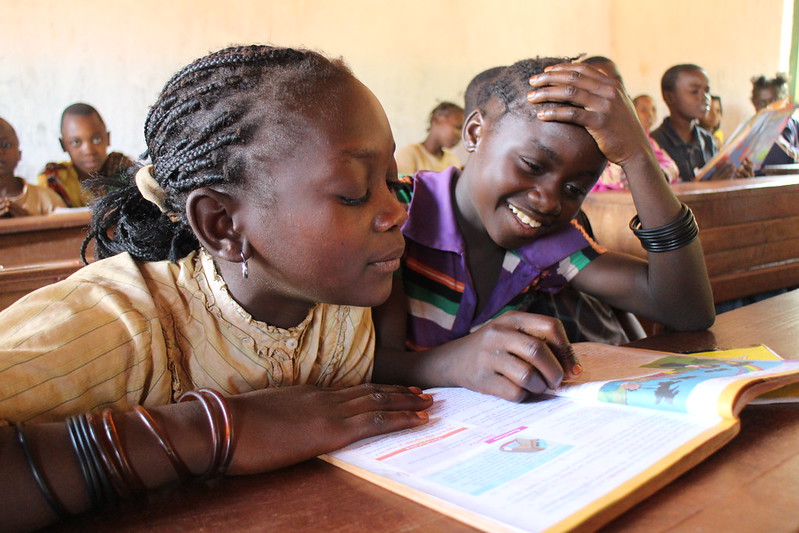In association with the Center for Global Development, the Coalition for Good Schools, the UK Foreign, Commonwealth & Development Office and the Global Partnership for Education. With support from Safe to Learn.
Executive summary
Solutions to ending violence in schools exist but more needs to be done to develop informative evidence from programme experience, in an accessible and transferable way to allow significant scale up.
Violence in Schools has to be addressed through multisectoral approaches, which produces complexity and gaps due to siloed nature of some work. Intentionally supporting multisectoral coalitions and networks can help address this, as well as ensuring that child protection and gender expertise is properly resourced within national and multilateral education investments.
Promising models suggest that Ministries of Education are well placed to hold accountability and coordinate with other, relevant line ministries, as well as crowd in relevant child protection, health, legal and gender expertise.
There is a critical need for increased political will on ending violence in schools, at the national and international level. Participants from different sectors coalesced around joint advocacy at select, upcoming moments (outlined in Next Steps.)
There was a joint commitment to collaborate more through research, evidence and programmatic intervention, including agreement to develop a shared global research agenda, strengthen data collection and explore greater linkages between violence prevention and foundational learning.
There was strong affirmation that a diversity of voices need to be part of prioritisation, decision-making and learning on this agenda, including children and young people; survivors; civil society; teachers; child protection, gender and education experts and practitioners.
Introduction
Education can contribute to transforming societies, it can reduce exposure to violence, and play a key role in shifting harmful social and gender norms and objectives. However, 1 billion children – up to half of the world’s children aged 2-17 years’ old – experience violence globally. This violence takes place on route to schools, and at schools, and is perpetrated by teachers, school staff and other students. Prevalence is highest in low- and middle-income countries where nearly a third of children are regularly exposed to physical or sexual violence at school. Girls and boys are both exposed to violence but girls are often more vulnerable to the most extreme forms of sexual violence. And some groups of children, including children with disabilities and LGBTQ+ children, are especially vulnerable to physical and psychological bullying.
Violence against children is a major obstacle to learning. It has devastating effects on brain development and health outcomes. And it harms children’s potential – school violence is associated with lower educational achievement and reduced adult income.
Evidence shows that this violence is preventable. Learning from pioneering schools and governments shows us that there is a key opportunity to build education systems free of violence, reduce school dropout and improve learning outcomes. Addressing school violence is central to achievement of the two G7 endorsed Global Objectives on Girls Education agreed in 2021, the national SDG4 benchmarks, SDG4 and to wider gender equality objectives.
The Wilton Park conference aim was to build a shared understanding of the priorities for ending violence in and through schools. A core set of actions to advance progress were discussed, including how to use the existing evidence and promising approaches for developing interventions on school violence to drive reform across education systems. It aimed to secure high level buy-in from key education stakeholders to drive forward more concerted, joined-up action to prevent violence in and around schools, before, during and after the conference. A key element of this was engaging with existing partners, coalitions and movements on the issue.
The conference supported the FCDO International Women and Girls Strategy and global campaign – Rights, Freedom, Potential – which aims to drive conversation and deliver progress on the empowerment and rights of women and girls around the world in the context of growing global threats and shocks.
“When you hit a child, their brain freezes. You cannot learn when you are scared. You cannot have foundational learning where there is violence”
Terminology
The below report uses ‘VIS’ as an acronym to save space but notes that the issue at hand is broader than ‘violence in schools’, and this was reflected in the pre-read and in the discussion at Wilton Park. There are a range of terms used to describe this issue, and which may be preferred in different fora (VACiS, VIAS, SRGBV etc.) The report author acknowledges the discussions around the need to look at the issue as violence in education, beyond just primary and secondary formal school settings as well as harnessing education to address violence. The author also acknowledges that the violence is not just in schools, but in, around, on the way to and through schooling. As such the author requests people read ‘VIS’ to include the above considerations.
